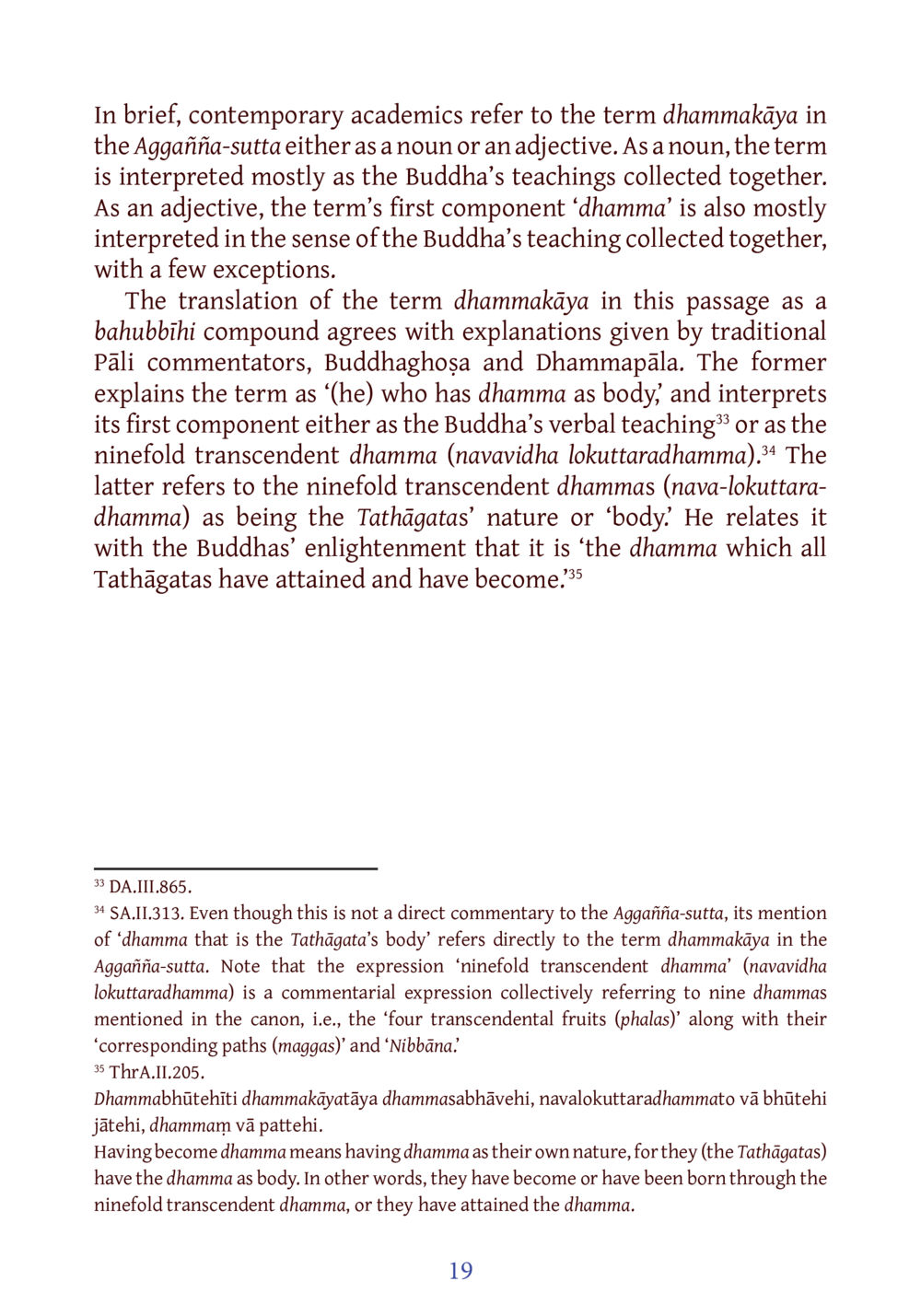Understanding Dhammakāya in Aṅgāṇā-sutta : หน้า 40/141
DIRI Journal : หน้า 40/141 Exploration of the term dhammakāya, its interpretations and significance in contemporary Buddhism.
0 ครั้ง

สรุปเนื้อหา
The term dhammakāya is interpreted in contemporary academia as both a noun and an adjective. As a noun, it denotes the Buddha’s teachings, while as an adjective, it refers to the nature of the Tathāgata. Traditional Pāli commentators like Buddhaghosha and Dhammapala describe dhammakāya as 'he who has dhamma as body', linking it with the Buddha’s enlightenment. The expression 'ninefold transcendent dhamma' indicates a collective reference to nine specific dhammas in the canon, including the four transcendental fruits and their corresponding paths towards Nibbāna. This reveals a deep metaphysical connection between the teachings of the Buddha and the nature of the Tathāgata, emphasizing that true enlightenment is attained through an understanding of these profound teachings.
หัวข้อประเด็น
-dhammakāya interpretation
-Buddha's teachings
-transcendent dhamma
-Pāli commentaries
-Tathāgata's nature
ข้อความต้นฉบับในหน้า
หน้าหนังสือทั้งหมด













































































































































